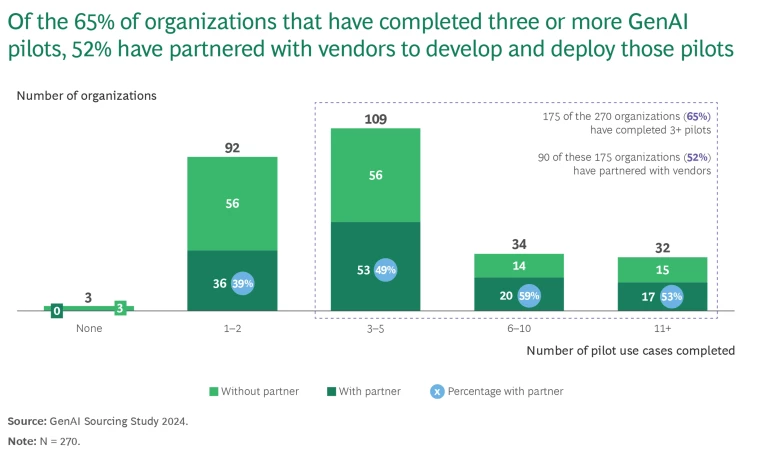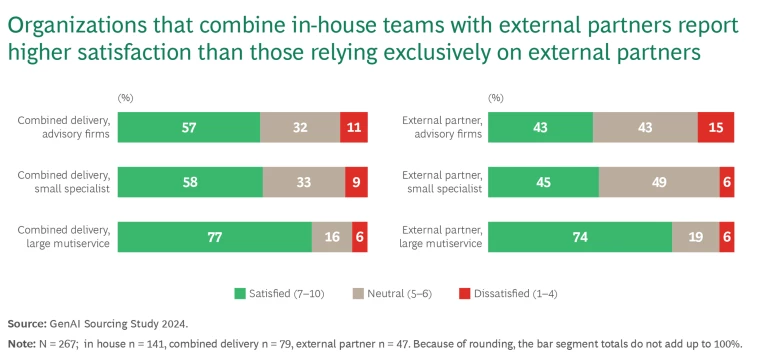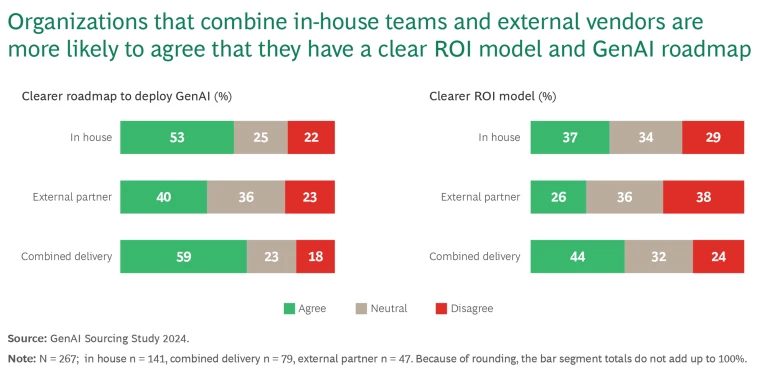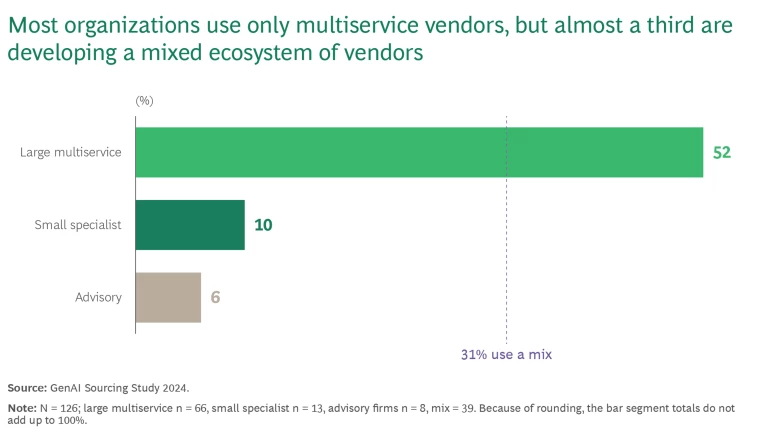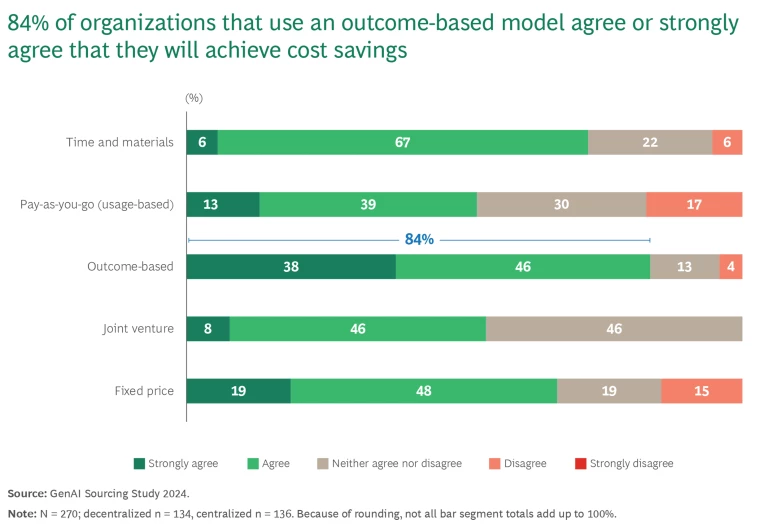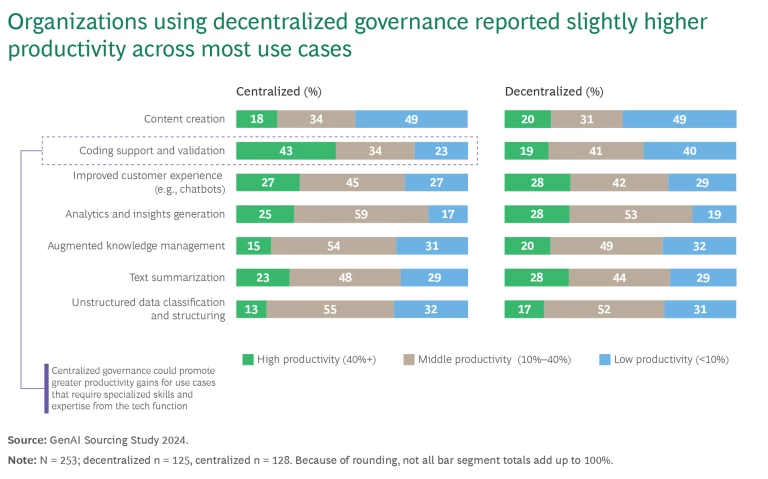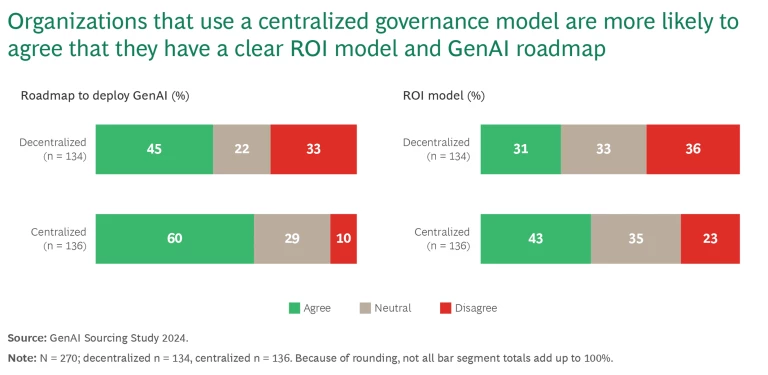About half of all organizations that are experimenting with GenAI are developing solutions exclusively in-house, without the help of partners—and that decision could limit potential benefits and slow progress toward their goals. According to a recent survey of 270 organizations across 15 sectors at various stages of their GenAI journeys, organizations that use a combination of in-house teams and external vendors to develop and deploy GenAI solutions are more satisfied and productive than those that try to go it alone. Meanwhile, those that rely entirely on in-house teams report less cost savings.
Yet even among organizations that use external vendors, many say that they don't adequately understand how these partnerships impact their GenAI performance. More than three-quarters say that they want more clarity on vendor quality and on what they are paying for. These are important demands. As organizations move from experimenting with GenAI pilots to scaling GenAI initiatives, they will be seeking more support from third-party vendors for capacity, capabilities, and expertise. With this in mind, we have identified four levers that organizations can use to work strategically with vendors and in-house teams to maximize GenAI impact.
Collaborate with vendors. Vendor collaboration yields greater satisfaction, ROI clarity, and cost savings. Of the organizations working with vendors on GenAI initiatives, 84% collaborate with two or more partners. Of this group, 62% leverage both in-house capabilities and external vendors. They report greater satisfaction than those going it alone or working only with vendors, citing a clearer deployment roadmap and better ROI tracking. Organizations that use only in-house teams report less cost savings.
Build a diverse ecosystem of partners. To accelerate GenAI performance, organizations should build a diverse and strategic ecosystem of partners that complements the organization and the partners. Most organizations use large multiservice vendors, or a mix of multiservice, specialist, and advisory firms. It is rare for organizations to partner exclusively with smaller specialist agencies or advisories. But organizations that do so report lower satisfaction scores than those that work with multiservice vendors. The more GenAI initiatives a company has in the works, the more likely it is to use a diverse mix.
Use an outcome-based model. In our survey, organizations that use an outcome-based commercial model for GenAI vendors were more likely to report cost savings—84% compared to 67% among those that use a fixed-price model. Organizations that use the outcome-based model also reported greater satisfaction when using small specialists and advisory firms. Interestingly, the commercial model mattered less for those working with large multiservice providers. For them, a range of commercial models—including fixed-price, joint ventures, outcome-based, and pay-as-you-go—yielded the same level of satisfaction.
Adopt the right governance model. Both centralized and decentralized governance models have their own specific merits. Organizations that use a decentralized governance model reported higher productivity, except in coding support and validation. This might mean that centralized governance is better for use cases that require specialized tech skills and expertise. Those that use a centralized governance model reported better ROI clarity and a better roadmap for GenAI deployment.
As organizations move from experimenting with GenAI pilots to scaling GenAI initiatives, strategic sourcing will become critical to success—to access additional capacity, capabilities, and expertise. For most organizations, going it alone will prove to be a costlier, less satisfying option. Organizations can use the four levers described here to get the most from their partnerships.

